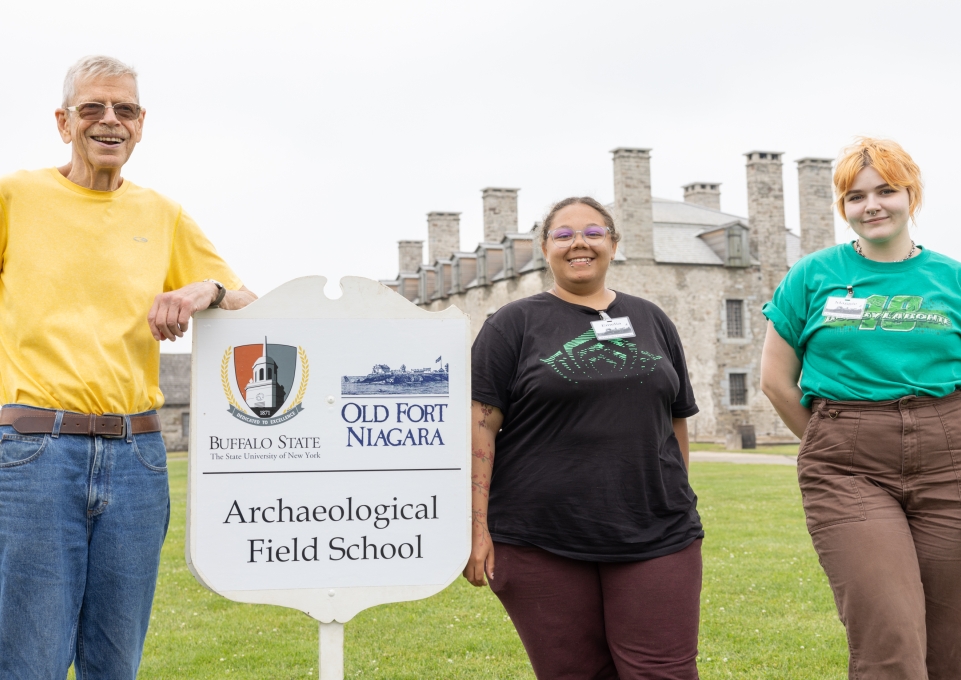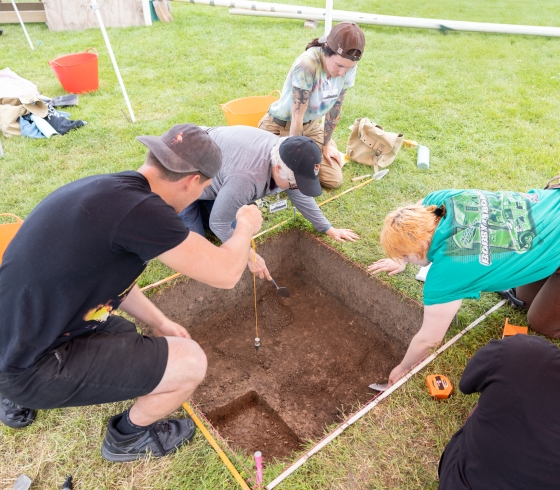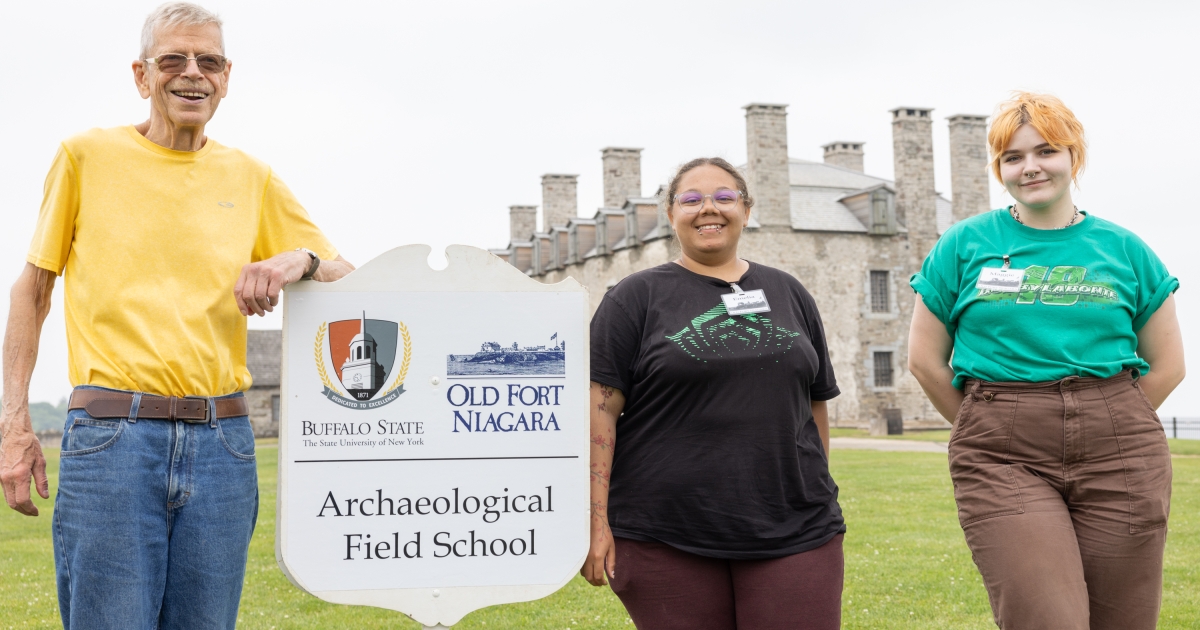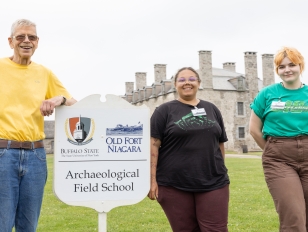
On July 3, thirteen students conclude their time as members of the Buffalo State Archaeological Field School at Old Fort Niagara, which allows participants to gain hands-on research experience and learn archaeological methods in a real-world setting.
Each year, students engage in a different research project, conducted fully outdoors. The Summer Fieldwork Scholarship fund provided nine scholarships for students.
“The Archaeological Field School at Old Fort Niagara provides students with an academic experience unlike any they have had before,” said Susan Maguire, associate professor of anthropology. “The students are conducting the research, collecting the data, documenting their findings and serving as the site interpreters for the visiting public. The experience is transformational for students, as they take on the responsibility for the research and see themselves in the roles of researcher, scientist, and archaeologist.”
This year’s research project, inspired by the 250th anniversary of the American Revolution and the signing of the Declaration of Independence, focused on locating the foundations of three structures: a soldiers’ barracks, an Artillery Officers Quarters, and an adjacent stable in the northeastern area of the fort’s parade ground.
“During the American Revolutionary War, Old Fort Niagara was a British fortification, which did not see action during the war, but served as a refuge for Loyalists and Native Americans displaced by attacks by American colonists,” Maguire said. “A review of the historic plans of the fort indicated that these structures were built between 1770-1780 and were removed just prior to the War of 1812. The students used a Total Station to demarcate the historic location of these structures on the grassy area of the parade ground and excavated four 50 centimeter by 50 centimeter test units in an east west line across the soldier’s barracks.”

Field School participants excavate a portion of land at Old Fort Niagara.
None of these units revealed structural foundations, which presented an opportunity for interdisciplinary collaboration. Kevin Williams, Buffalo State associate professor of geosciences, came to Old Fort Niagara to conduct a ground-penetrating radar (GPR) survey of the area and noted a few anomalies in the general area of the foundation.
“Based on these anomalies, we placed four one meter by one meter units on top of these noted items in hopes of locating the buried foundations of the Artillery Officers’ Quarters,” Maguire said. “These units were placed on the west wall and north wall of the structure and the south wall of the stable. Two additional one meter by one meter units were placed on the southwest and northwest corner of the Artillery Officers Barracks.”
The Field School recovered a significant number of artifacts, including ceramics, faunal remains, glass seed beads, musket balls, and gunflints, along with an assortment of building materials including nails, brick, mortar, plaster and window glass. These artifacts will be washed, cataloged, labeled, and analyzed during the academic year, as well as used to develop independent research projects.
“This field school is an important opportunity for me as I plan to work with artifacts in a museum setting,” said Maggie DeWitt, a participating student majoring in art history and minoring in anthropology. “Anytime I was digging in an area in the test unit, I felt peaceful and focused.”
Regardless of major, the Field School provides valuable transferable skills.
“As a writing major, spending time at field school introduces a new perspective on the word ‘analysis,’” added junior Margot Voisinet, who is pursuing a minor in forensic anthropology, “while also paving the way for imagination and creativity.”
Maguire said that the skills gained through field experience translate to multiple career paths.
“Students gain knowledge and new skills but also develop confidence in themselves that carries into their professional lives in whatever careers they choose,” she said. “As a professor, it’s rewarding to see the students transform from passive learning to active research roles and present their findings to the visitors at the fort.”
On June 18, Old Fort Niagara celebrated Buffalo State Day, during which visitors observed the students in the Field School as they excavated a portion of the officers’ barracks. Buffalo State students, faculty, staff, and their families were welcomed free of charge with a valid Buffalo State ID card.
“Standing where someone once stood and holding what they once held created a direct, physical link to the past, reminding me that these connections aren’t just history; they’re what make us human,” said Xiamara Brooks, a senior pursuing a double major in biology and philosophy with a minor in forensic anthropology. “I have Field School to thank for the chance to uncover and hold the past with my own hands. I wouldn’t have wanted to spend my summer any other way.”
Photos by Jesse Steffan-Colucci, Buffalo State photographer.



